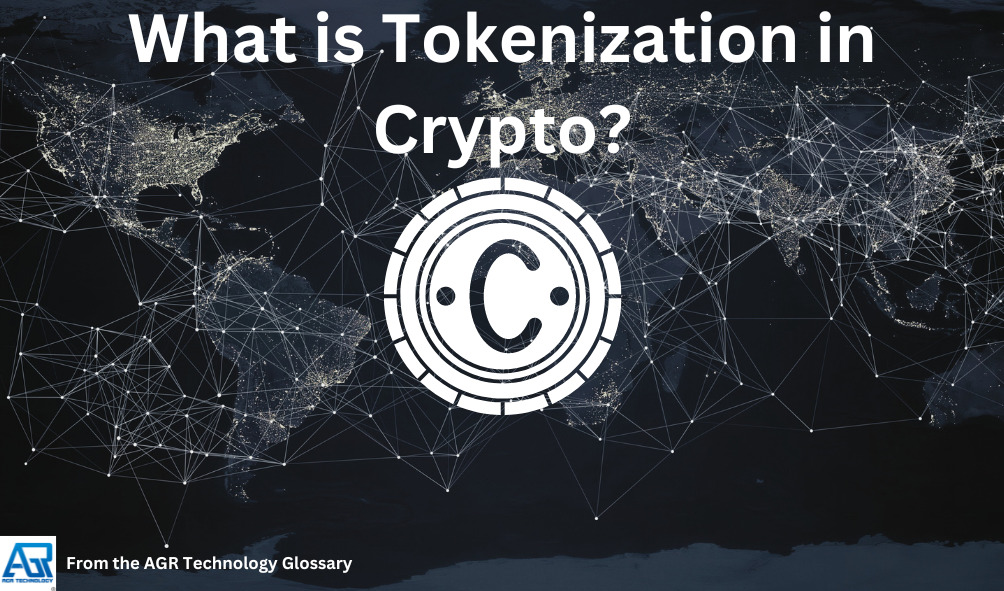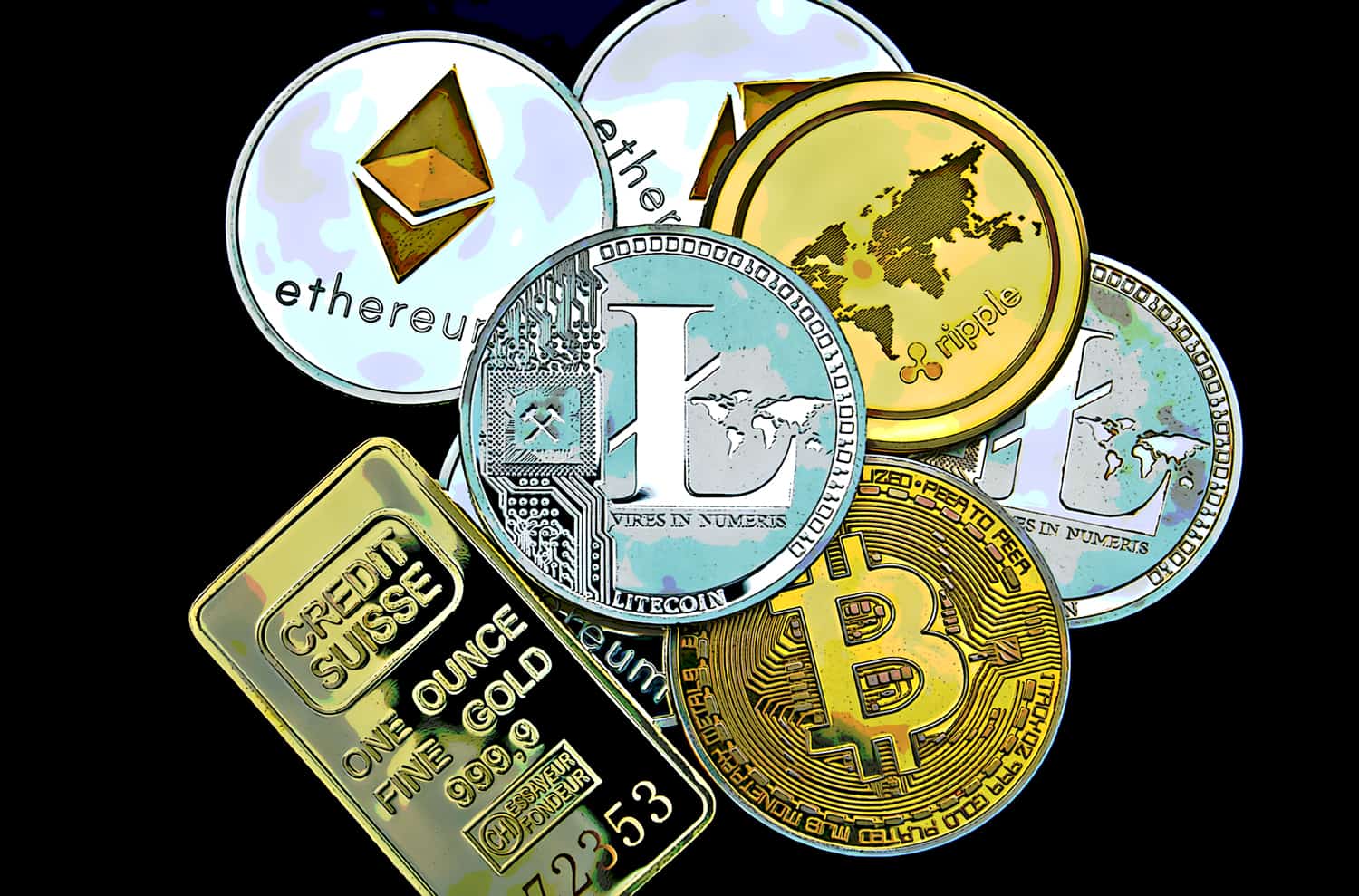What Is Tokenization in Crypto?

In the world of cryptocurrency, tokenization is a term that is gaining popularity. But what does it really mean? Tokenization refers to the process of converting real-world assets into digital tokens that are stored on a blockchain network. In this glossary page, we will explore what tokenization in crypto means, its role in cryptocurrency, how it works in blockchain, and the different types of tokens. We will also delve into the benefits of tokenization, the challenges and risks involved, and the future trends in this space. Read on as we discuss how tokenization has the potential to transform the financial landscape and impact other industries.
Understanding Tokenization in Crypto

Tokenization in crypto enables the conversion of physical assets into digital tokens, expanding ownership rights to a larger audience. These fungible tokens represent assets like real estate, art, or commodities, offering greater liquidity and transparency that attracts smaller investors. It unlocks value and accessibility, providing a new way to invest in assets. Globally, various cryptocurrency exchanges in Australia, different mobile apps to acquire Crypto in Hong Kong, Crypto trading apps for Dubai, New Zealand Crypto apps, Taiwan Crypto & general trading apps as well as Norway Crypto trading platforms utilize tokenization for asset trading.
Defining Tokenization
Tokenization involves the conversion of sensitive data into unique tokens, thereby safeguarding the original information and enhancing security. This method ensures that payment information is protected, reducing vulnerabilities to data breaches. The concept of tokenization plays a crucial role in data security and encryption, as it substitutes confidential data with non-sensitive data, ensuring privacy and protection. In the realm of cryptocurrency, tokenization is integral to maintaining the integrity of users data and ensuring secure transactions within the blockchain network. Furthermore, tokenization is essential in preventing the unauthorized access of primary account numbers and safeguarding the overall integrity of payment processors.
The Role of Tokenization in Cryptocurrency
Tokenization plays a pivotal role in expanding the utilization of digital currencies within financial transactions. By leveraging blockchain technology, it securely tokenizes digital assets, enhancing the security of transactions and creating crypto tokens. This process is crucial in safeguarding transaction data and cardholder information, ensuring the encryption of sensitive data and overall data security. Tokenization not only enhances security but also broadens the scope of digital currency applications in various financial scenarios, thereby contributing to the evolution of cryptocurrency and blockchain networks.
How Tokenization Works in Blockchain

Tokenization in blockchain involves the conversion of assets into digital tokens, representing ownership of underlying assets. These tokenized assets are securely stored in token vaults, ensuring ownership rights and security. Blockchain technology facilitates the tokenization of real-world assets, reducing transaction fees and exchange commission. This process leverages cryptography in a decentralized network where nodes ensure the security of transactions and data. By tokenizing assets, central banks and payment processors can enhance the security of cardholder data and transaction information. Additionally, NFTs are becoming increasingly popular as tokenized representations of unique digital or physical assets.
The Process of Tokenizing Assets
The process of tokenizing assets involves the conversion of real estate, art, or securities into digital tokens, creating unique representations of specific assets. These tokens enable practical use in smart contracts and transactions, ensuring secure data representation. The tokenization process on blockchain networks generates digital embodiments of assets, leveraging cryptography for secure transactions. By storing cardholder data and ownership information on decentralized ledgers, nodes in the network authenticate transactions securely, safeguarding primary account numbers and other sensitive information. Additionally, non-fungible tokens (NFTs) created through tokenization have gained popularity in representing digital art and collectibles, further expanding the application of tokenization in various asset classes.
Tokenization in Different Blockchain Networks
Tokenization takes place within various blockchain networks, each exhibiting unique characteristics and catering to diverse assets and use cases. These networks enable the creation of security tokens, thereby fostering liquidity, transparency, and accessibility within crypto markets. Moreover, specific blockchain networks support the development of stablecoins through tokenization. This process leverages cryptography and ledger technology, involving nodes that validate transactions and maintain the integrity of the network. As a result, tokenization on different blockchain networks contributes to the effective representation and transfer of digital assets, leading to enhanced market efficiency and financial inclusion.
Video overview of the topic:
Types of Tokens in Cryptocurrency
Security tokens encapsulate various assets like real estate, equity, or debt, providing investors with a stake in the underlying asset. On the other hand, utility tokens enable access to specific functions within a blockchain network, adding a layer of functionality to the ecosystem. Tokenization introduces innovative ways to utilize asset-backed tokens in financial transactions, broadening the application of blockchain technology. By diversifying cryptocurrencies, tokenization allows for the creation of fungible tokens, which can be exchanged on a one-to-one basis, enhancing liquidity. Ultimately, the concept of tokenization enhances the flexibility and utility of digital assets within the cryptocurrency space.
Security Tokens and Their Role
Security tokens offer ownership rights and stakes in tangible assets, expanding investment opportunities. They represent real-world assets, such as real estate and company shares, ensuring compliance with regulatory standards. Additionally, security tokens enable fractional ownership, attracting smaller investors to participate in asset ownership. This democratization of investment opportunities is facilitated through the tokenization of assets as security tokens.
Utility Tokens and Their Use Cases
Utility tokens play specific roles within blockchain networks and applications, providing voting rights, access to services, and participation in network governance. Through tokenization, utility tokens are endowed with practical use cases in decentralized applications, enhancing their fungibility and ensuring wider applicability. By expanding the functionality of blockchain networks, utility tokens drive adoption and usage, catalyzing the growth of decentralized ecosystems. This has implications for various industries such as finance, real estate, and gaming, where utility tokens can streamline transactions and enable new forms of value exchange.
Benefits of Tokenization in Blockchain
Tokenization introduces a novel approach to digitalize, exchange, and administer real-world assets within blockchain networks. This advancement fosters greater accessibility, allowing smaller investors to partake in asset ownership. Additionally, tokenization enhances transactional liquidity, transparency, and efficiency, revolutionizing the traditional asset management landscape. By reducing barriers, tokenization democratizes asset ownership, ensuring a more inclusive market environment. Furthermore, the seamless transferability of tokenized assets substantially amplifies market liquidity, presenting a significant advantage for investors and asset owners.
Enhanced Security and Privacy
Enhanced security and privacy are paramount in tokenization. By replacing sensitive data with unique tokens, the risk of exposing such information to hackers is significantly reduced. This not only ensures data privacy but also provides an extra layer of security to transactions and digital assets in the crypto space. Implementing tokenization technology is crucial for securing sensitive data from potential breaches, safeguarding against unauthorized access and criminal records. Additionally, the integration of cryptography and nodes further fortifies the security measures, making tokenization a reliable means of protecting payment processor and cardholder data.
Increased Liquidity of Assets
Tokenization fosters increased asset liquidity through fractional ownership, enabling more efficient trading of real estate assets. This approach attracts a broader investor base, as digital platforms facilitate trading and the creation of fungible tokens, further boosting liquidity. By allowing assets to be broken down into smaller units, tokenization reduces barriers for smaller investors and democratizes asset ownership, contributing to overall market liquidity.
Challenges and Risks in Tokenization
The tokenization process encounters regulatory hurdles and compliance challenges, while also facing technical obstacles such as ensuring encryption and data security. Additionally, tokenization of assets may experience issues related to transaction fees and exchange commission, along with the potential centralization of underlying asset ownership rights. Furthermore, the tokenization of digital assets raises concerns about security tokens and compliance with regulations, highlighting the need for robust solutions to address these challenges and risks. Incorporating advanced cryptography and secure nodes can help mitigate these risks, ensuring the protection of cardholder data and payment processor information within the decentralized ledger. The evolving landscape of NFTs further emphasizes the importance of overcoming these challenges to foster trust and confidence in tokenization processes.
Technical Challenges and Solutions
Addressing the technical challenges of tokenization is crucial for ensuring the security and integrity of digital assets. This involves overcoming encryption and data security hurdles to facilitate seamless tokenization. Cryptographic security and data encryption are integral to the tokenization process, necessitating robust solutions for secure token vault management. Additionally, ensuring blockchain network security is essential in addressing technical challenges. By addressing these technical aspects, tokenization technology can offer a secure and efficient means of managing digital assets on the blockchain, paving the way for a more secure and trustworthy tokenization process.
Future Trends in Crypto Tokenization
The future of tokenization in the crypto space is poised for significant growth and evolution, with widespread adoption expected in financial transactions. Beyond the realm of cryptocurrency and finance, tokenization is projected to impact various industries, indicating a broad spectrum of applicability. As tokenization takes hold in the crypto sphere, it is anticipated to give rise to new forms of blockchain tokens, revolutionizing digital currencies and assets. Moreover, the forthcoming trends indicate that tokenization will bring about greater transparency and liquidity to financial assets, marking a pivotal shift in the digital financial landscape.
Predictions for the Evolution of Tokenization
The evolution of tokenization is set to revolutionize ownership rights and transaction processes, enhancing the liquidity of digital assets. It is expected to create substitutes for traditional financial assets and currencies while leading to increased transparency and security in transactions. Predictions also include its impact on internet-based financial services, with widespread usage in financial transactions. Tokenization is anticipated to have an impact beyond the crypto and financial sectors, leading to the emergence of new blockchain tokens and revolutionizing digital currencies and assets. This trend is likely to bring transparency and liquidity to financial assets, shaping the future of the digital economy.
Impact on Other Industries
The influence of tokenization extends well beyond the realm of financial transactions, permeating into sectors such as real estate and medical records. Anticipated to reshape the tokenization process in real estate, this technology holds potential to revolutionize the management and security of medical records. Furthermore, its impact is expected to extend to utility tokens and voting rights, opening up new opportunities for smaller investors in real estate and assets. Its transformative potential across various industries showcases the far-reaching implications of tokenization beyond the scope of traditional financial assets and transactions.
Can Tokenization Transform the Financial Landscape?
Tokenization has the potential to revolutionize the financial landscape by democratizing investments, improving liquidity, and reshaping traditional transactions. This technology could lead to enhanced accessibility for smaller investors and transform ownership rights.
Experiments are being conducted by UBS, JPMorgan, Goldman Sachs, Franklin Templeton, KKR, and Apollo. CBA, ANZ, and NAB are working on several pilots in Australia, as is the Reserve Bank.
Frequently Asked Questions
What are some examples of tokens that exist within the cryptocurrency market?
Some tokens in the cryptocurrency market include Bitcoin (BTC), Ethereum (ETH), and Binance Coin (BNB). Other notable tokens are Ripple (XRP), Litecoin (LTC), and Chainlink (LINK). Each token serves different purposes and has varying value and use cases based on technology and market demand.
What is the purpose of tokenization in the world of cryptocurrency?
Tokenization in cryptocurrency serves the purpose of creating digital assets that represent real-world assets. It aims to increase liquidity, accessibility, and transparency while streamlining transactions. Additionally, tokenization enables fractional ownership, making it easier for smaller investors to access high-value assets.
Can any asset be tokenized or are there limitations?
While almost any asset can be tokenized in theory, there may be legal and regulatory limitations. Real estate, artwork, and sports team ownership are examples of assets that have already been tokenized. However, certain assets may require specialized knowledge and expertise for tokenization.
Conclusion
Tokenization in crypto has emerged as a transformative force in the financial landscape. It offers numerous benefits, such as enhanced security, increased liquidity, and improved privacy. The process of tokenizing assets on the blockchain opens up new possibilities for ownership and investment. However, there are also challenges and risks associated with tokenization, including technical hurdles and regulatory compliance. Looking ahead, tokenization is expected to continue evolving and impacting various industries beyond finance.
As more businesses and individuals recognize the potential of tokenization, we can expect to see further innovation and adoption. If you found this blog informative, don’t hesitate to share it on your social media platforms. Help spread the word and contribute to the growing awareness and understanding of tokenization in the crypto world.
Other related pages on our glossary:
How to get started buying & selling Bitcoin in Australia
Different platforms that enable you to recieve Cryptocurrency payments on your website
Privacy Coins Explained (Definition, History & Concept)
Digital Wallets / Smart Wallets
Comparing different options and mobile apps for Singaporeans wanting to trade and buy Crypto
DAO (Decentralized Autonomous Organization)
Dapp (Decentralized Application)
Fintech (Financial Technology)
Web 3.0 Technologies & Concepts
Electronic Funds Transfer Definition
Comparing different loan platforms and companies for Australians SMBs
Blockchain Explorer Definition
What is Cryptocurrency Market Analysis?
Top-rated Cryptocurrency exchanges & applications for India
Crypto exchanges for South Africans
Some of the top-rated Cryptocurrency exchanges & apps for Saudi Arabia
Some leading best small business loan/financing providers for Perth businesses
Top-rated Alternatives to Etoro for Australian CFD traders
Top Alternatives to Swyftx for Australian Crypto users
Some of the best Cryptocurrency exchanges/apps for Canadians
What are Initial Exchange Offerings (IEOs)
Mortgage affordability calculator
Top 10 Trading Platforms – Top 10 CFD Brokers: Australia (Comparisons ranked)
Different commercial loan brokers for Melbourne businesses
Collection of some of the best day trading platforms for Australians
ICO Marketing Solutions to help brands capture more online reach
CMC Markets Alternatives for Australian end-users wanting to start trading
Coinspot alternatives platforms Australians wanting to get started with Cryptocurrencies
Services to help you recover lost Crypto from your devices
List of some top Etoro alternatives for Australian forex traders
Small Business Loans Sydney – List of leading providers
What to look for when choosing a neobank app
Web3 Software Development Services By AGR Technology
NFT Digital Marketing Services By AGR Technology
Simple Guide Showing Australians how to buy Cryptocurrency
Earn interest on your Cryptocurrency assets
How to buy Bitcoin or other Cryptocurrency
Stock market trading software Australia
How to pay overseas staff from Australia online
Guide to buying Etherium (Eth) in Australia
Web3 Marketing Services By AGR Technology to help brands reach more users
Source(s) cited / Bibliography:
[Online]. Available at: https://forkast.news/wp-content/uploads/2020/07/tokens.jpg (Accessed: 12 December 2023).
Company, McKinsey &. “What is tokenization?.” McKinsey. October 6, 2023. Accessed December 12, 2023. https://www.mckinsey.com/featured-insights/mckinsey-explainers/what-is-tokenization.
Payment tokenization: What it is and how it works. Stripe. https://stripe.com/en-au/resources/more/payment-tokenization-101. Accessed December 16, 2023.
J. Eyers, (2023). How crypto is forcing banks, funds towards new digital asset markets [Online]. Available at: https://www.afr.com/companies/financial-services/how-crypto-is-forcing-banks-funds-towards-new-digital-asset-markets-20231013-p5ec0c (Accessed: 16 December 2023).
J. Eyers, “Why banks are looking at real-world asset tokenisation”, 20-Oct.-2023. [Online]. Available: https://www.afr.com/companies/financial-services/explainer-why-banks-are-looking-at-real-world-asset-tokenisation-20231019-p5edly. [Accessed: 16-Dec.-2023].
th.bing.com/th/id/OIP.I3cuQvfe8ujNK5YvCMXvBwHaE8?rs=1&pid=ImgDetMain. Accessed 16 Dec. 2023.
![logo-new-23[1] logo-new-23[1]](https://agrtech.com.au/wp-content/uploads/elementor/thumbs/logo-new-231-qad2sqbr9f0wlvza81xod18hkirbk9apc0elfhpco4.png)